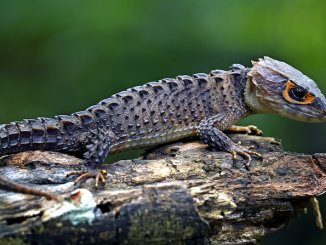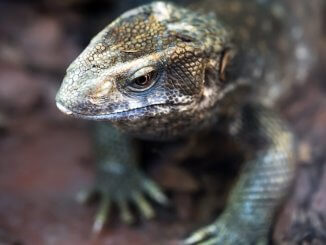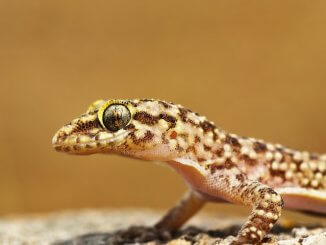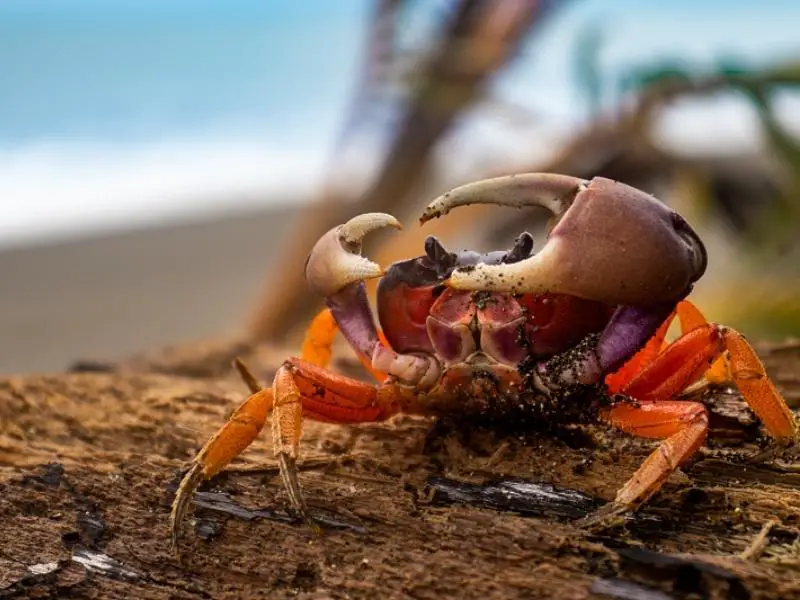
The Halloween moon crab is a colorful crab species hailing from coastal forests in the Pacific and Atlantic coasts of the Americas.
Halloween moon crabs are tame and highly adaptable to life in captivity, but they require constant attention, so they’re best suited to people with previous crab-keeping experience.
Halloween Moon Crab Overview
| Common name | Halloween moon crab, Halloween crab, moon crab, purple moon crab, whitespot crab, harlequin land crab, red land crab, mouthless crab |
| Scientific name | Gecarcinus lateralis |
| Natural habitat | Natural habitat Coastal forests in the Pacific (Mexico to Peru) and Atlantic (Florida to Guyana in northeastern South America) coasts in the Americas |
| Adult size | 2–4 inches |
| Average lifespan | 8–10 years |
| Diet | Omnivore (mostly herbivore) |
| Housing | Minimum 15 gallons for one crab or 30 gallons for two crabs, 79–88°F water temperature, 75–90°F air temperature, 75%–90% humidity |
| Experience | Intermediate |
Origin
The Halloween moon crab (Gecarcinus lateralis) originates in forested areas bordering the Pacific and Atlantic coasts. Halloween moon crabs live on land close to freshwater and saltwater pools that are large enough for the crabs to climb in and out of without drowning. This crab species doesn’t swim.
The Halloween moon crab’s wild habitat is warm, humid, and densely vegetated. The crab is nocturnal and spends most of the day hiding in holes and small caves between rocks. During the dry season, Halloween moon crabs dig burrows into the earth. The damp, humid environment protects the crabs from the dry air above the ground.
Halloween moon crabs are commonly found in the wild and aren’t considered an endangered species.
Appearance and Behavior
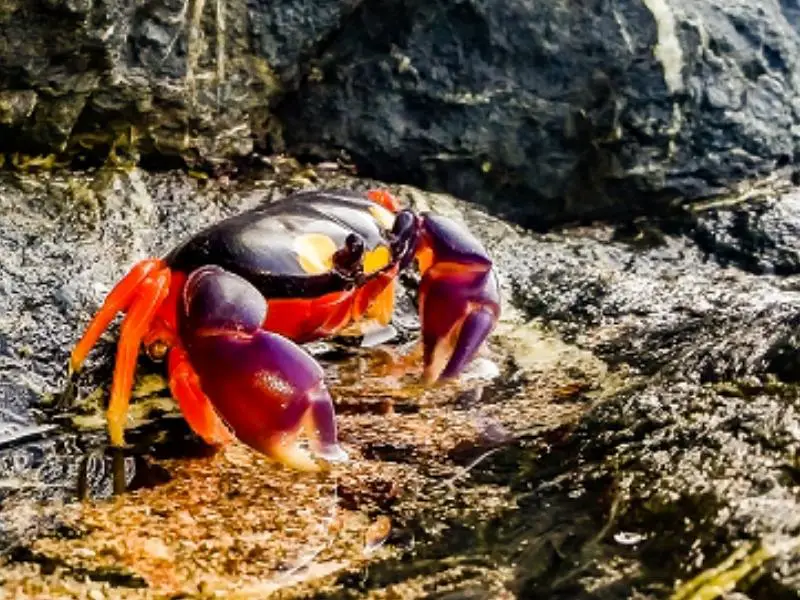
The Halloween moon crab is so-called because of its Halloween colors. The crab’s carapace is black, with bright orange markings above the eyes and two white dots on the back of the shell. This crab species has orange-red legs, purple front claws with white-ish tips, and eyes that protrude from its shell on thin black stalks.
Halloween moon crabs become duller in color as they get older. Molting also causes the crab’s colors to fade, and this isn’t a cause for concern — the crab’s bright colors will return once the molting process is complete.
Moon crabs have a gill chamber on the underside of their carapace. This keeps the crabs’ gills moist while they’re on land.
Male moon crabs have a narrower, slimmer abdomen plate, larger, brighter claws, and more vivid colors than females.
Size and Lifespan
The Halloween moon crab is a small crab species. Adult males and females grow to 2.5 inches long in captivity. In the wild, the crab is known to grow up to 4 inches long.
With proper care, Halloween moon crabs live between eight and ten years on average. In the wild, the crabs have an average lifespan of four years.
Temperament
Halloween moon crabs are shy, skittish crabs that become stressed when they sense danger. The crabs don’t enjoy human contact and prefer to be left to their own devices.
In the daytime, Halloween moon crabs sleep in caves and other shaded shelters. The crabs are nocturnal and are most active overnight, when they scavenge for food on land and in the water.
When Halloween moon crabs feel threatened, they’re known to pinch and claw if they can’t easily escape. The crabs display aggressive behaviors, such as fighting, due to their territorial nature. Ideally, house moon crabs in separate tanks to avoid conflict.
Housing Halloween Moon Crabs
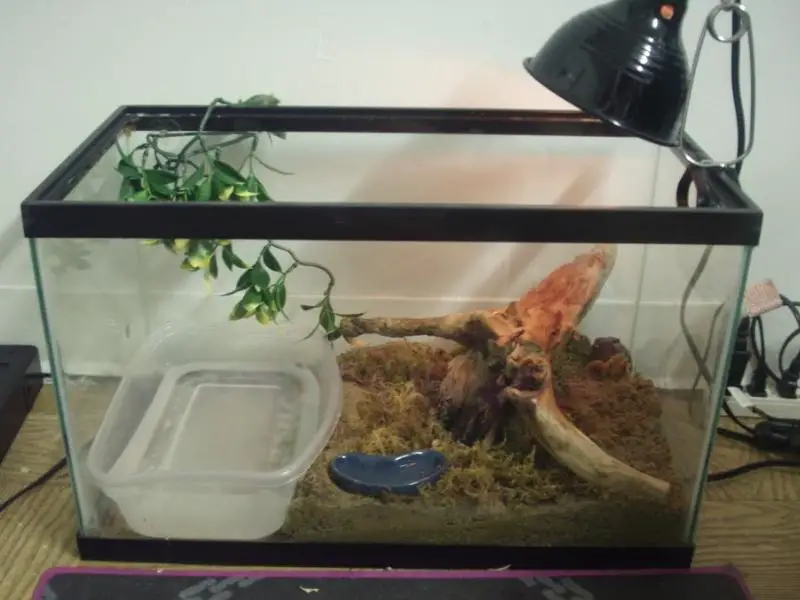
The Halloween moon crab’s natural habitat is coastal beaches, forests, and swamps in warm, tropical climates. Provide a similar environment in captivity to ensure your crabs are comfortable in their new home.
Keep Halloween moon crabs in a glass terrarium with a screen top.
Enclosure size
An enclosure for a single Halloween moon crab should be at least 15 gallons. The crabs enjoy climbing trees, scavenging in the substrate for food, and burrowing in the earth to molt, so make sure the enclosure is tall enough to allow for a thick layer of substrate and decorations that can be climbed. The enclosure lid should be tight-fitting to prevent the crabs from escaping.
Halloween moon crabs are territorial, so you’ll need at least a 30-gallon enclosure to keep two crabs together.
Lighting
Halloween moon crabs are nocturnal, but they should still receive at least eight hours of daylight to know when they should sleep and when they should be active.
If your tank contains only plastic plants, sunlight from a nearby window should provide enough light for your crab. Make sure the enclosure isn’t located in a patch of direct sunlight, which could lead to overheating and cause the crab to become stressed.
To encourage live plant growth, install a low-wattage light bulb above the tank’s screen. A red heat bulb can be used to monitor the crab overnight.
Temperature and Humidity
An air temperature of 75–90°F and a water temperature of 79–88°F is ideal for a Halloween moon crab enclosure. The crabs prefer a warm, humid environment, which can be achieved with a built-in heater and a heat pad.
Place the heat pad in one section of the enclosure, allowing the crab to move into this section to get warm, or away from the section to cool down. Monitor the temperature daily with a thermometer.
Halloween moon crabs need a humidity of 75%–90%. The water in the enclosure should provide enough humidity without the need for an automatic mister. If your humidity levels are too low, buy a glass top for your enclosure and decrease ventilation.
Substrate and Decoration
The Halloween moon crab’s enclosure should have two main sections: a terrestrial area and a water area.
The terrestrial area should be lined with a moisture-holding substrate, like soil, peat, sand, or coconut fiber. Top the substrate with a thick layer of leaf litter or moss. The substrate should be moist enough to hold its shape when you stick a pencil in it. Ensure the substrate is 6–10 inches deep to allow the crab to dig.
Decorate the terrestrial area with large rocks, flat stones, ceramic flower pots, crab huts, plastic tunnels, and artificial plants. This should provide plenty of opportunities for the crabs to hide and explore. Provide a series of logs and branches for the crabs to climb.
In nature, Halloween moon crabs have access to freshwater and saltwater. Provide both water options in captivity with one bowl of spring or distilled water, and one bowl of water containing instant ocean marine salt. Leave chlorinated tap water to sit out for one day before adding the bowl to the enclosure to allow the chlorine to evaporate.
The bowls should be large enough for the Halloween crabs to climb inside, with rocks and fake plants as “steps” in and out of the bowl. 1 inch of water is ideal for these crabs. If the water is too deep, the crabs could drown.
Cleaning
Over time, a Halloween moon crab enclosure accumulates waste, spilled water, leftover food, and exoskeleton molting residue. Cleaning the enclosure regularly is essential to avoiding dangerous disease-causing bacteria growth.
Spot-clean your crab’s enclosure once a day, removing waste and dirty substrate with a small shovel. Clean out both water bowls and replenish them with clean water.
Deep clean the enclosure every two months. Set up a temporary housing that the crab can use during the deep clean. Empty out the home enclosure and dispose of the substrate. Use hot water to clean the enclosure walls and floor, then wait for them to dry and replenish the substrate. Wipe down plants and rocks with hot water, and soak plastic decorations for five minutes. Allow the decorations to fully dry before returning them to the enclosure.
Halloween Moon Crab Care
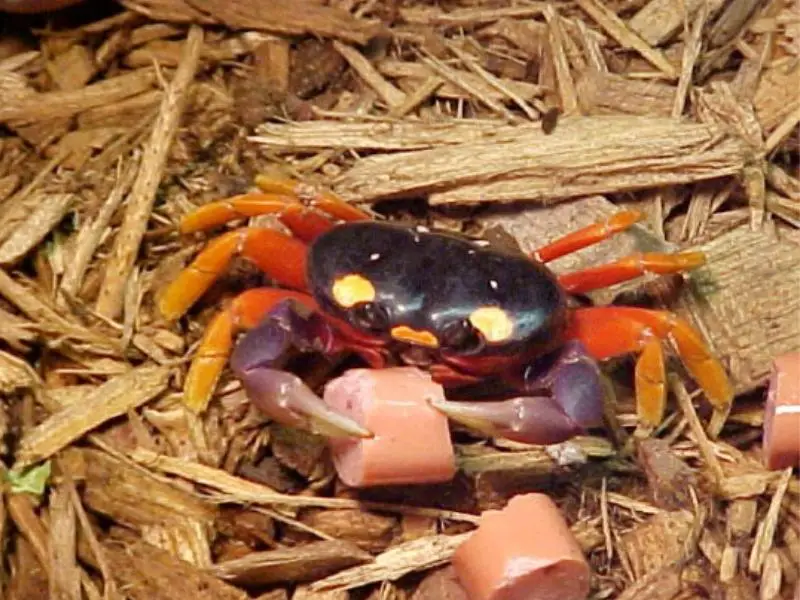
Halloween moon crabs are low-maintenance and relatively easy to look after in captivity. The crabs are suitable for beginners, but owners should be prepared to put in the work to keep their pets happy.
Food and Water
In the wild, Halloween moon crabs are opportunistic eaters, meaning that they eat whatever they can find in their habitat. The crab’s wild diet consists of seeds, fruits, leaf litter, algae, and decomposing plants.
Provide a similar diet in captivity. Although Halloween moon crabs are omnivores, most of their diet (around 90%) should be herbivorous.
Good plant-based foods for a Halloween moon crab are kale, broccoli, spinach, algae, seeds, figs, nuts, seaweed, and oyster shells. These foods are also rich in calcium, which is essential for maintaining a healthy exoskeleton. Protein-rich foods like crickets and bloodworms should be supplied as a treat once or twice a week.
Feed a generous pinch of two-to-four types of food once a day, preferably in the evening. Leave the food for up to 12 hours to be eaten. Remove leftover food after this time. Vary the food types every week to keep the crabs interested in eating.
Handling
Halloween moon crabs are shy crabs that prefer not to be handled. You should only handle your crab when absolutely necessary, such as to relocate the crab or perform a health check.
Wear gloves when handling a Halloween moon crab to avoid being injured by the crab’s pincers. Pick the crab up by the body from behind. Never pick the crab up by its legs or pincers, which could result in a loss of limb.
Common Health Issues
Halloween moon crabs aren’t prone to disease or other health issues if they’re kept in optimal conditions.
There are two potential health concerns that may affect these crabs from improper feeding and care:
Calcium Deficiency
A lack of calcium in a Halloween moon crab’s diet will lead to calcium deficiency, characterized by a softened, weakened, deformed, or damaged exoskeleton, and difficulty walking. To treat calcium deficiency, begin adding calcium powder to your crab’s diet instantly, and introduce calcium-rich foods, like oyster shells and egg shells.
Molting Issues
Low humidity in the enclosure may cause molting issues for your Halloween moon crab. During molting, a Halloween crab completely sheds its exoskeleton and grows a new skin, which hardens to a shell. In low humidity conditions, the crab may struggle to shed its exoskeleton. Treat molting issues by increasing humidity to 90%. Don’t touch or pick up the crab during molting — you need to wait at least 10 days for the shell to harden.
Breeding
In the wild, Halloween moon crabs reproduce at the beginning of the rainy season, then migrate to the ocean to release thousands of eggs. The eggs hatch into planktonic marine larvae, and only a few hundred eggs metamorphose and return to the land.
Replicating these environmental conditions in captivity is virtually impossible, and little is known about when Halloween moon crabs reach sexual maturity. Halloween crabs sold in the aquarium trade are wild-caught due to the difficulty of captive breeding.
Choosing and Buying a Halloween Moon Crab
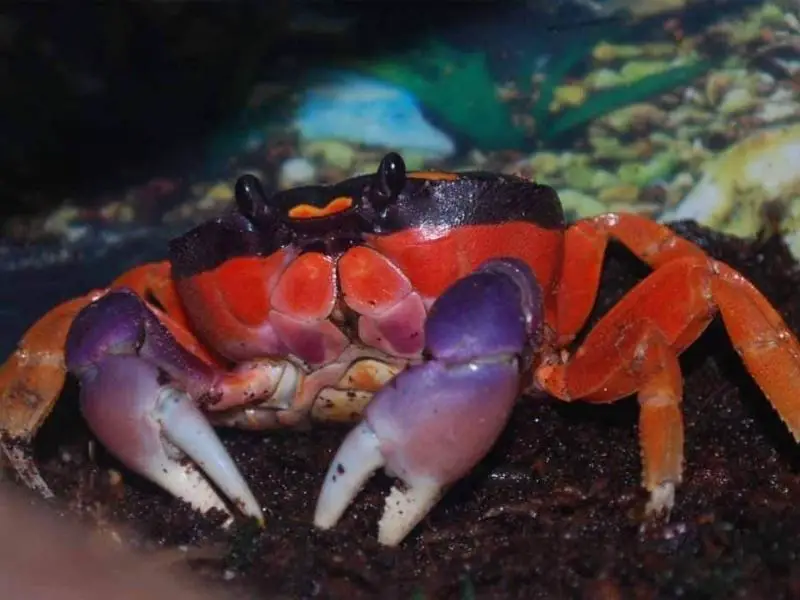
The cost of a Halloween moon crab is about $30. You can buy the crab from online pet stores. The cost of keeping Halloween moon crabs is fairly low, about $150 per year.
Before you buy a Halloween moon crab, check for signs of good health, including active movement, a brightly-colored shell, and good eating habits. Avoid crabs that are pale, sluggish, lethargic, or missing limbs, and crabs that spend prolonged periods hiding and not eating.
All Halloween moon crabs are wild-caught, so make sure to quarantine your crab in its own enclosure for at least two weeks before moving it to your main enclosure. This will prevent the crab from passing on diseases and parasites from its wild environment to other enclosure inhabitants.

